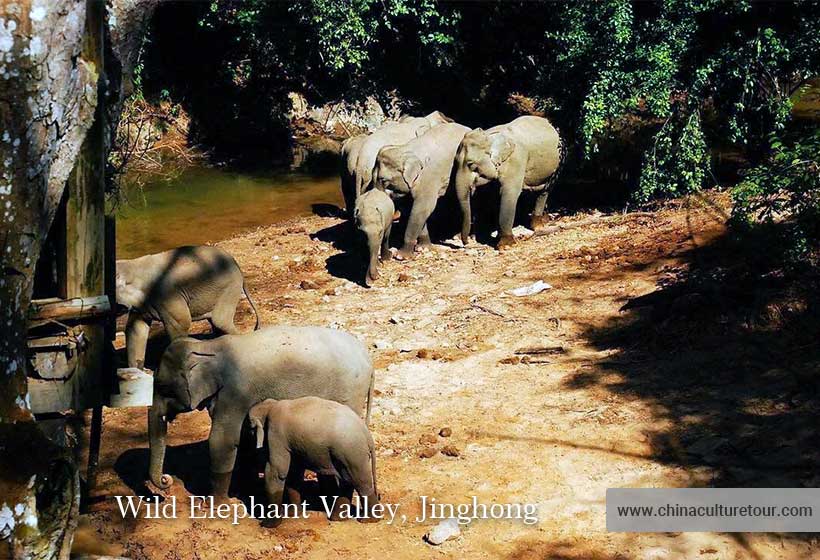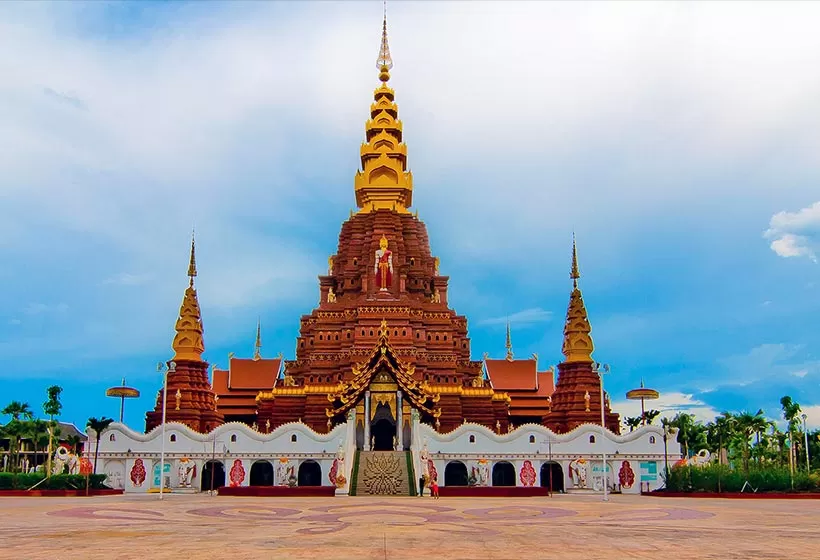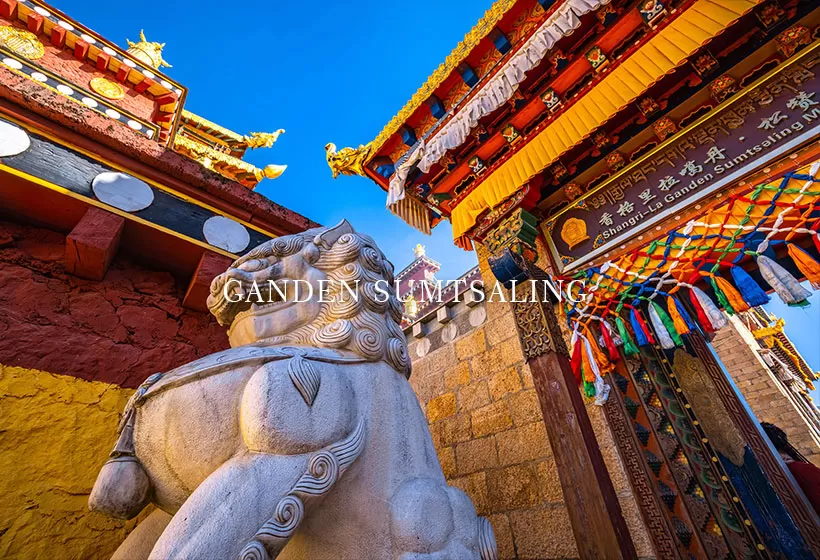Short Introduction to Xishuangbanna Local Culture: History, Nation, Diet, Clothing, etc
Xishuangbanna, located in the southern part of Yunnan Province Xishuangbanna Dai Autonomous Prefecture, bordering Laos to the south and Myanmar to the southwest. It has a permanent resident population of 1.333 million, with 790,300 belonging to various ethnic minorities. The region is predominantly inhabited by the Dai ethnic group, whose unique customs and festivals, such as the famous Water Splashing Festival, attract many visitors each year.
In the Dai language, Xishuangbanna means "an ideal and magical paradise." It is renowned worldwide for its enchanting tropical rainforest landscapes and vibrant ethnic diversity. The region boasts a rich variety of ethnic customs and cultural traditions, making it a unique destination that blends natural wonders with the colorful heritage of its minority groups.
Brief History
The history of Xishuangbanna dates back to the Three Kingdoms and Jin Dynasties when it was under the jurisdiction of Yongchang Commandery. During the Northern and Southern Dynasties, 12 Dai tribes formed the confederation "Lexeishuangbang" and recognized the emperor as the "Heavenly King." In the Yuan Dynasty, Xishuangbanna was established as a province and military administration, governed under the tusi (native chieftain) system.
In 1570, Xuanweishi Zhao Yingmeng divided the region into 12 "bannas." The name "Xishuangbanna" comes from the Dai language, where "Xishuang" means twelve and "banna" refers to a feudal administrative unit (literally translated as "twelve thousand rice fields"), indicating twelve administrative regions.
In 1950, Xishuangbanna was liberated and placed under the jurisdiction of Pu'er Prefecture. In 1955, it was officially established as the Xishuangbanna Dai Autonomous Prefecture.
Ethnic
There are mainly 13 ethnic minorities living in Xishuangbanna Dai Prefecture,The Dai people are the largest ethnic group, along with other groups such as the Hani, Blang, and Jino. Xishuangbanna's architectural style reflects a blend of Dai and other ethnic influences, with stilted houses featuring wooden structures and pointed roofs, showcasing rich ethnic characteristics.
The Dai people have their own unique language, script, music, dance, and traditional customs. Some of their traditional dances include the Peacock Dance, White Elephant Dance, and Golden Deer Dance.
Major traditional festivals include the Dai Water Splashing Festival, the Hani "Gatangpa" Festival, the Blang "Haowasa" Festival, and the Jino "Wumao" (New Year Festival).
Festival of Ethnic
Dai Water Splashing Festival (mid-April), also known as the "Bathing Buddha Festival," is called "Sangkran Bimai" in the Dai language, meaning "New Year." It is also one of the first events to become a national intangible cultural heritage in China. People start splashing water on each other as a way to offer blessings, symbolically washing away illness and misfortune, while welcoming a future filled with happiness and prosperity.
Blang "Haowasa" Festival, also called the "Opening Door Festival" (mid-July in the Gregorian calendar), marks the end of Buddhist Lent. Family members perform the "Songma" ritual of repentance to the head of the family, praying for peace and safety in the coming year and to ward off disaster.
Hani "Gatangpa" Festival (January 2-4) is a time for people to remember their ancestors and welcome the new year. During the festival, people pound sticky rice cakes, offer sacrifices to household gods, and host banquets.
Jino "Wumao" (New Year Festival) takes place from February 6-8. During this time, they beat drums, hold ceremonies such as cattle sacrifice, farming preparations, and ironworking rituals, and pass down skills from master blacksmiths to apprentices.
"Open Door Festival" (celebrated on October 15 in the Gregorian calendar) is a significant event for the Dai people, where they gather at temples to perform grand ceremonies known as "Danfo," offering food, flowers, and money to Buddha statues and monks. The festival symbolizes the end of the three-month rainy season and marks the lifting of restrictions on marriage imposed during the "Closed Door Festival." From this day, young men and women are free to court or get married.
Ethnic Minority Clothing
Dai men's traditional clothing consists of collarless, front-opening or side-fastened short shirts with narrow sleeves, paired with long pants. In colder weather, they wear woolen shawls, and commonly wrap their heads in white or blue cloth. Tattooing is widespread among Dai men, symbolizing bravery and serving as protection against evil spirits, as well as body decoration. Boys, around the age of 11, typically get tattoos featuring tigers, leopards, lions, dragons, snakes, or eagles.
Dai women in Xishuangbanna wear short, fitted tops with narrow waists and wide hemlines, paired with colorful tube skirts that reach down to their feet. The skirts are often held in place with beautifully crafted silver belts.
Both Dai men and women love to carry a woven cotton shoulder bag, known as "tompah," when they go out. These bags are vibrantly colored, simple in design, and reflect the rich cultural and practical aspects of Dai life.
Diet Style and Culinary Tastes
Xishuangbanna is also famous for its cuisine. The region borders Laos and Myanmar, and is primarily a multi-ethnic area dominated by the Dai people, so its dishes mainly feature Dai flavors, which are typically sour, spicy, and fragrant. Popular dishes include Lemongrass Grilled Fish, Dai-style Baoshao, Sour Bamboo Shoots with Fish and pineapple rice etc. Another delicacy that requires some courage to try is Deep-fried Insects. You can also try some Southeast Asian specialties, such as Laotian iced coffee and Vietnamese snacks.
Read More Food-Restaurants in Xishuangbanna »
Cultural Heritage
The cultural heritage of the Dai people includes the Water Splashing Festival, Peacock Dance, Dragon Boat Racing, traditional Dai clothing, Bai Ye Sutra and the art of Dai brocade weaving, and other notable cultural heritage elements include the rooster fighting, the Jinuo ethnic big drum dance, and the folk songs of the Blang ethnic group (Blang ballads).
Dai Buddhism Religion Culture
Dai Buddhism, a significant aspect of the cultural identity in Xishuangbanna, combines elements of Theravada Buddhism with local traditions and practices. In Xishuangbanna, beyond its dense tropical rainforests, wild elephants, and peacocks, the region also boasts a rich Buddhist culture with numerous ancient temples and pagodas. Among the Dai villages, there are still over 500 Buddhist temples and more than 200 pagodas, Such as Mengle Grand(Dafo) Buddha Temple, Zongfo Temple, Golden Pagoda Temple, and Borre Temple, which serve as important pilgrimage destinations for the local Dai people. Through rituals, offerings, and community celebrations at these sacred sites, Dai Buddhism fosters a sense of unity and cultural continuity among the diverse ethnic groups in the region, reflecting their deep-rooted spiritual beliefs and vibrant traditions.
Religious Taboos
Visitors must remove their shoes when entering a Buddhist temple. It is forbidden to step on a monk's shadow and touch a monk's head. If you encounter monks, whether young or old, greet them with hands pressed together in a respectful gesture and a nod.
If staying overnight in a Dai household, avoid whistling, do not move the iron tripod over the hearth, do not step over the tripod, and never use a stool as a pillow.
Customize Your Unique Yunnan Tour

If you are interested in one of the Yunnan itineraries mentioned above, please contact us, and we will be happy to customize it and provide a quote tailored to your preferences.
Alternatively, if you would like to customize your Yunnan Tour, please visit our Yunnan Tour Customized Center. We assure you that you will receive a reply within 24 working hours.
Informative Articles for Your Xishuangbanna Trip
 Wild Elephant Valley in Xishuangbanna
Wild Elephant Valley in Xishuangbanna- Travel Guide: attractions, seasons, hotels, food, itineraries, etc.
- Top destinations: places to visit in Xishuangbanna
- Travel itineraries: best itineraries for your reference
- Weather: the best time and seasons to visit Xishuangbanna
- Top attractions:well-selected top attractions in Xishuangbanna
- Xishuangbanna: rich and unique cultural
- Cultural immersions: hands-on activities to spotlight your trip
- Unique perspective: top different things to do
- Local food: what to eat while traveling in Xishuangbanna
- Luxury hotels: where to stay in Xishuangbanna
- Yunnan Tours: tailor-made Yunnan Tours for your reference
GREAT FAMILY CHINA TOUR
JULY 2024 We wanted to thank Grace at China Culture tour for organizing a great tour of China. We enjoyed our Beijing - Xian-Chengdu -Guilin -Yangshuo - Shanghai trip. Our local guides Bruce in Beijing, Susan in Xian, Jane in Chengdu, Mike in Guilin and Mary in Shanghai took care of us…read more details »
Teng Han L from SINGAPORE
Ready to Create a Unique Dream Travel?


